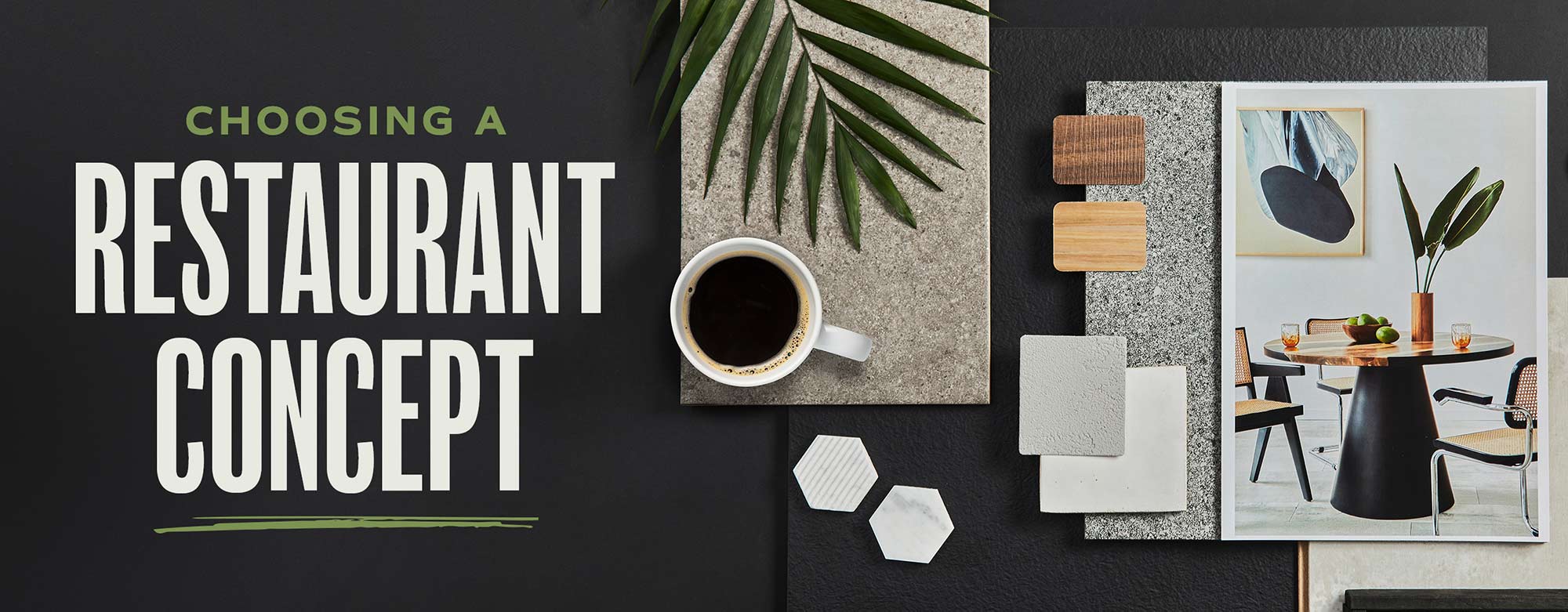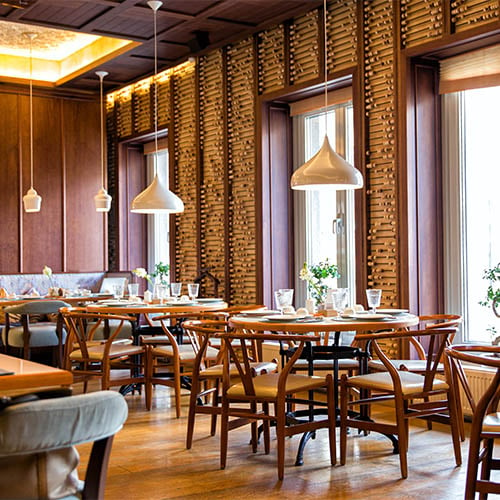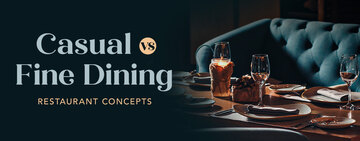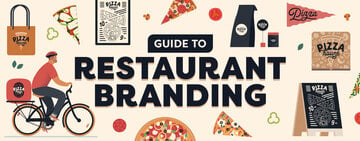
Choosing a restaurant concept is a crucial decision that sets the foundation for the success of your establishment. It involves selecting the theme, atmosphere, and style of your restaurant, which all will ultimately shape the dining experience you offer to your customers. A successful restaurant concept will resonate with the customers in your target market and set your restaurant apart from the competition. Below, we cover some of the most important parts of creating a restaurant concept and ensuring it’s successful.
What Is a Restaurant Concept?
A restaurant concept is the overall idea or theme that defines the restaurant. Concepts include your menu's design, service style, dining room decor, and — of course — the style of food. Many restaurants are conceived based on a chef’s personal experiences or interests. Heritage, local ingredients, traditions, or family are all common sources of inspiration for restaurant concepts. Concepts can also be defined by a chef’s travel experience, training, or an interest in a certain area of art, science, or culture.
Why Is a Restaurant Concept Important?
A restaurant concept is the foundation on which a successful establishment is built. It is the unique identity and personality that sets a restaurant apart from its competitors. Having a well-defined concept is crucial for targeting the right audience and building a strong, recognizable brand. In terms of restaurant service, a quality restaurant concept can engage employees, reducing turnover and ensuring consistent results.
Restaurant Concept Elements

A good restaurant concept will cover an array of elements with one cohesive mood or tone. From the name of the establishment to even the paint color on the walls, every detail contributes to the overall concept.
Restaurant Name
The name of your restaurant should give customers a pretty good idea of the type of food you serve. It needs to be memorable, preferably simple, and most importantly, authentic. There are many different approaches to choosing a restaurant name, but owners often take inspiration from their location, a signature dish, or even a family member who inspires them.
Menu Writing
Menu descriptons can be as literal as listing off the ingredients in the food and the ways they were cooked, or as poetic as a brief description of an experience, visual image, or abstract theory. Your approach should make sense in the context of your food and overall theme.
Service Styles
While service styles may seem unrelated, the type of service you offer directly relates to your restaurant concept in the sense that it affects the diner's experience. Here is a list of service types that can impact your concept:
- Bistro
- Mid-Scale Dining
- Family Style
- Coffee Shop
- Bar
- Pop-Up
- Ghost Restaurant
- Buffet
- Food Truck
- Fast Food
Restaurant Decor and Ambiance
Wall color, lighting, furniture, table settings, music, and decor all play a huge role in the overall impact of your restaurant. So, even though your food must be the main focus of your efforts, it’s important to make some basic decisions about decor pretty early on in the planning process. Do you want a fun, casual vibe for game days or a romantic spot suitable for date nights? Considering the needs of your customers can act as a helpful reference point for decor and theme decisions as well.
Restaurant Concept Design
Of course, deciding on one concept can be tricky. We’ve broken the process down into five steps to help guide your thoughts:

- Find Inspiration - This is easier said than done and often takes chefs an entire lifetime to figure out. Deciding the style of food that you gravitate towards the most is a good place to start. It can come from your heritage or upbringing, but it doesn’t have to.
- Add a Unique Spin - Restaurants that offer something unique stand a much better chance of sticking around and getting customers excited about your food.
- Research Your Customer Base - It can be tough to tell exactly what type of restaurant will resonate with people in a given area, but it’s important to make sure that there is some demand for what you want to offer. Get a sense for the competition and observe where other businesses have found success. Try to think about what’s important to your prospective customers and communicate those values through aspects such as your restaurant mission statement.
- Develop a Menu - While it’s okay to stray from traditions a little bit, it’s important to avoid conceiving dishes that are muddled or confusing. So, if you brand yourself as an Irish pub, you may want to offer all the classic staples that people will expect before they even walk in the door. If your concept is Chinese-Mexican fusion or molecular gastronomy, you can probably get away with a lot more whimsy.
- Choose a Service Style - Once you have your menu mostly figured out, it should be easy to pick a service style that will lend itself well to your dishes. For example, many Italian foods are great when served family style, but pricey seafood entrees might be best in a fine dining environment.
What Makes a Good Restaurant Concept?
Just as every artist finds a different path for each project, developing a restaurant concept is very personal to each restauranteur. While there’s never any clear cut strategy that works for everyone every time, there are a handful of basic guidelines you can use to measure the success of your restaurant concept. Discover the most important features of a quality restaurant concept below:

- Consistency - A good restaurant concept should deliver a consistent experience to customers every time they visit.
- Target Audience - Whether it's for families, young professionals, or food enthusiasts, a restaurant concept should be tailored to your target market’s needs and desires. This includes factors such as menu options, pricing, ambiance, and overall experience.
- Scalability - Scalability is an important consideration, especially if you have plans for future growth or expansion. A good restaurant concept should be scalable, meaning it can be replicated and adapted to different locations without losing its essence.
- Profitability - Ultimately, a good restaurant concept should be financially viable and profitable. It should have a clear understanding of the target market's spending habits and be able to generate sufficient revenue to cover costs and generate a profit.
- Flexibility - The ability to adapt and evolve is crucial in the ever-changing restaurant industry. A good restaurant concept should have room for innovation and flexibility to accomodate changing trends, customer preferences, and market demands.
Restaurant Concept Examples
When it comes to choosing a restaurant concept, there are numerous options to consider. The concept you choose will ultimately define the atmosphere, menu, and experience you offer to your customers. Here are some popular restaurant concept examples to inspire you:

- Fine Dining - Locations like Michelin Star restaurants are known for their elegant atmosphere, exceptional service, and high-quality cuisine. These establishments often offer a sophisticated dining experience, featuring upscale decor, a carefully curated wine list, and a menu that showcases gourmet dishes prepared with the finest ingredients.
- Fast Casual - These establishments offer a more relaxed atmosphere compared to fast food chains, with menu options that are often customizable and made-to-order. Fast casual restaurants typically focus on fresh ingredients and healthier alternatives, appealing to customers looking for a convenient yet satisfying dining experience.
- Sports Bar - Sports bars are popular destinations for sports enthusiasts looking to catch a game while enjoying food and drinks. These establishments often feature multiple large screens, comfortable seating, and an extensive menu of bar food favorites such as wings, burgers, and nachos.
- Farm-to-Table - The farm-to-table concept emphasizes the use of locally sourced, seasonal ingredients in the menu. These restaurants often work closely with local farmers and suppliers to ensure the freshest and most sustainable ingredients are used in their dishes.
While developing a restaurant concept might seem like an impossible feat, if you break down the process into smaller steps, it becomes a lot more manageable. Creating a menu, mood, and service style that feels cohesive largely relies on a keen intuition and clear vision. So, whether you’re opening a restaurant for the very first time or thinking of fresh restaurant concept ideas that differ from restaurants you’ve established in the past, the same basic principles apply. Try to balance uniqueness with expectation, keep things consistent, and put food first.





